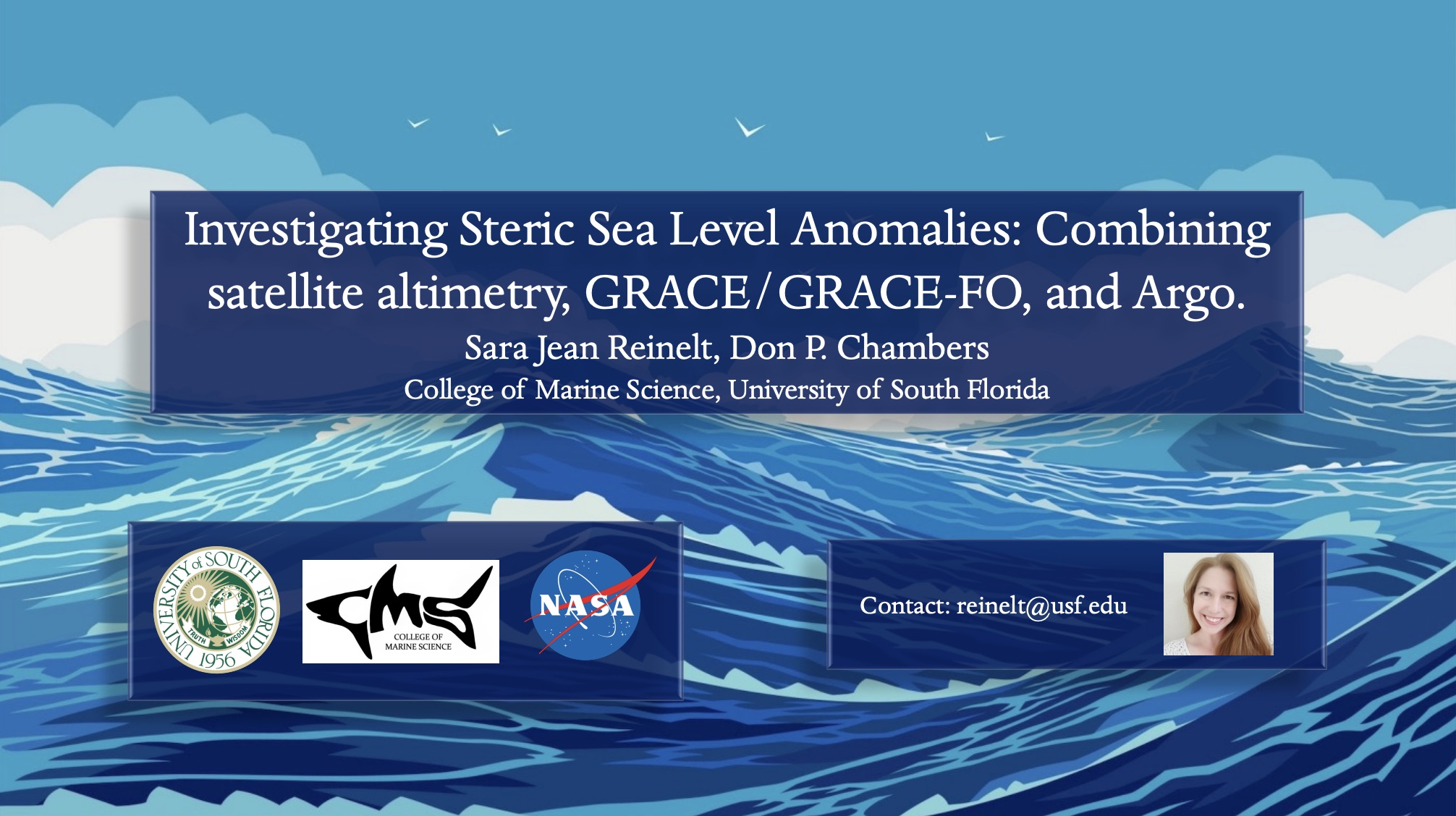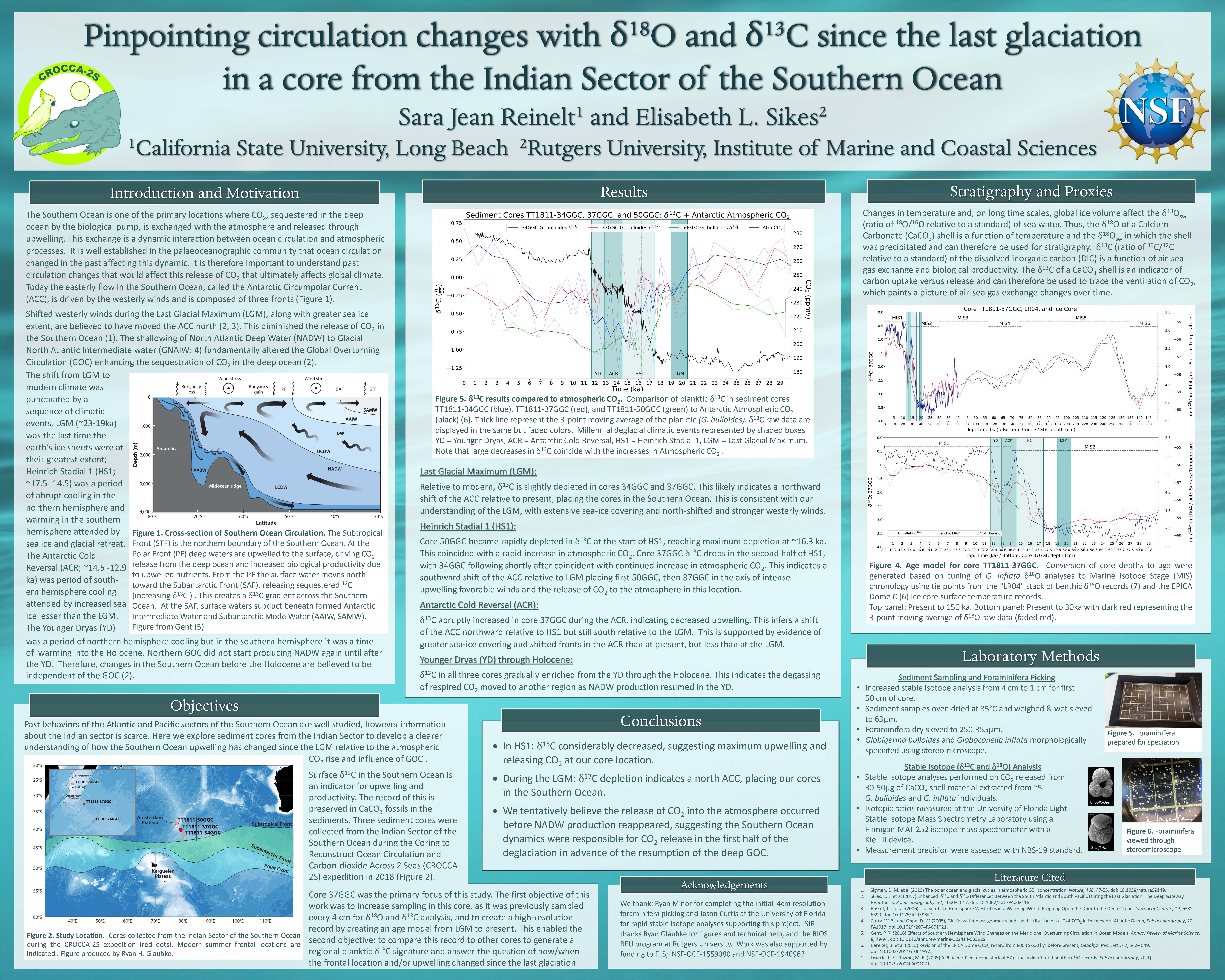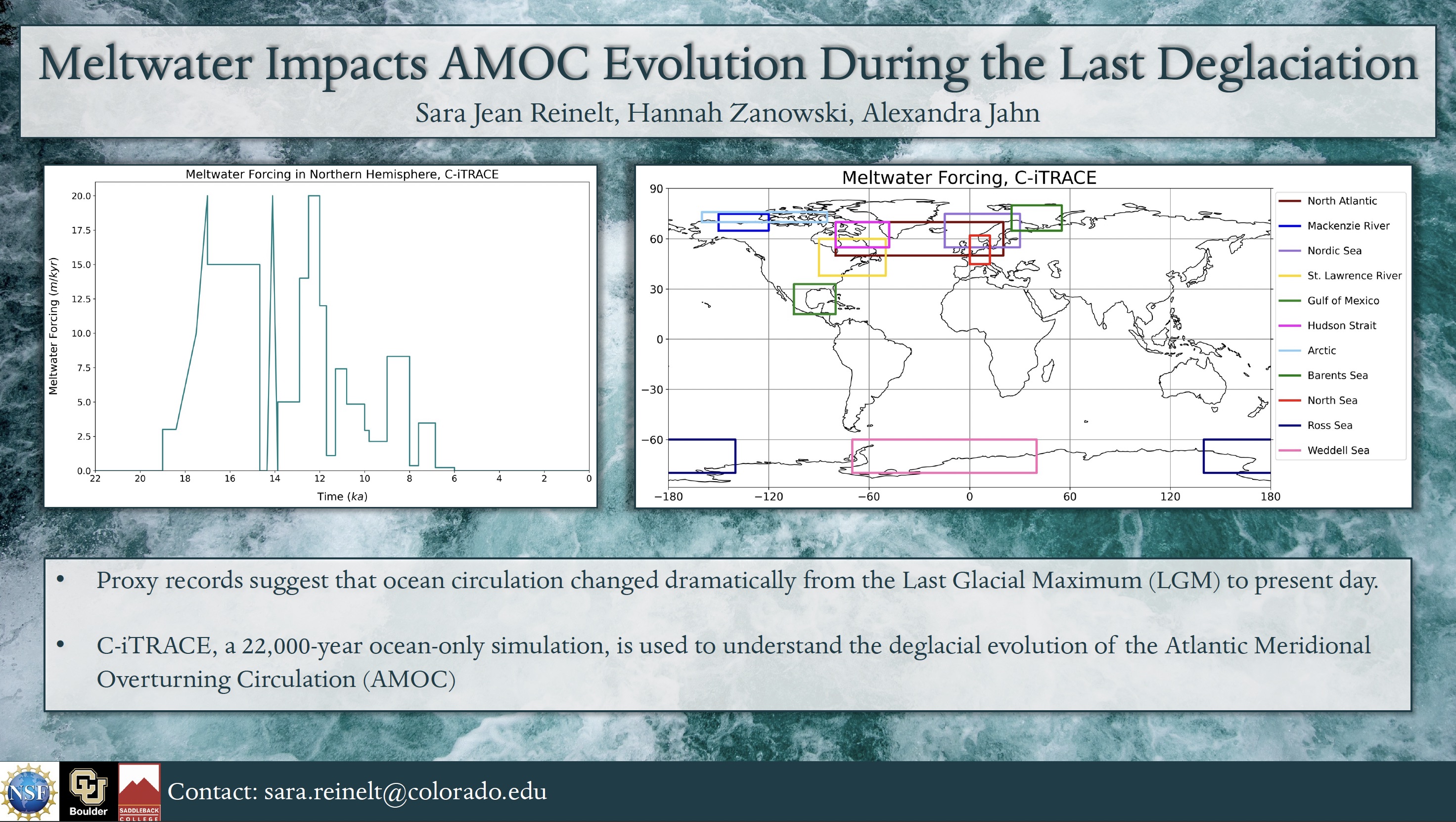
Steric Sea Level
Two major components of sea level rise are changes in steric sea level (eg. density changes) and changes in mass (eg. water additions due to ice melt). Recent studies have derived steric sea level anomalies primarily from in situ observations from the Argo Program. One limitation to this method is the statistical mapping of Argo float data, especially in eddy-rich regions.
Here we conduct an initial study of combining satellite altimetry, GRACE/GRACE-FO, and Argo data to estimate monthly maps of steric sea level anomalies from January 2005 through December 2019. A consistent optimal interpolation method is used to recover the longest wavelength correlated patterns (while accounting for the eddy- and other mesoscale signals in the covariance function). Individual Argo profiles of temperature/salinity are used to compute density and vertically integrated steric sea level anomalies (as well as thermosteric (temperature-based) and halosteric (salinity-based) components) for the exact time and location of the Argo float. These are then optimally interpolated into monthly maps of steric sea level anomalies, using the altimetry-GRACE/GRACE-FO estimate as a first guess.
An examination of the Argo updates to the initial guess reveal several areas with anomalously large updates away from eddy-rich regions. A further examination of the thermosteric/halosteric anomalies reveal significant departures from other floats in several regions after 2017. These are tied to a handful of Argo floats. Although flagged as “good” in the standard Argo climatology, removing these floats leads to a significant reduction in misfit between Argo and the initial guess, and a significant rise in global steric sea level since 2017.
Preliminary results were presented orally at the Ocean Surface Topography Science Team Meeting (2023) (Full presentation) and will be presented via poster at the Ocean Sciences Meeting (2024).
Paleoceanography: Stable Isotopes
The Southern Ocean (SO) is a primary location where CO2 is exchanged with the atmosphere via interactions between ocean circulation and atmospheric dynamics. Previous work has established that the ocean’s...
Paleoceanography: AMOC
Description to come.
COVID-19
The novel coronavirus disease (COVID-19) is caused by Severe Acute Respiratory Syndrome Coronavirus 2 (SARS-CoV-2) and is an enveloped, positive-sense RNA virus that infects the respiratory tract. It is understood that neonates, the elderly...

